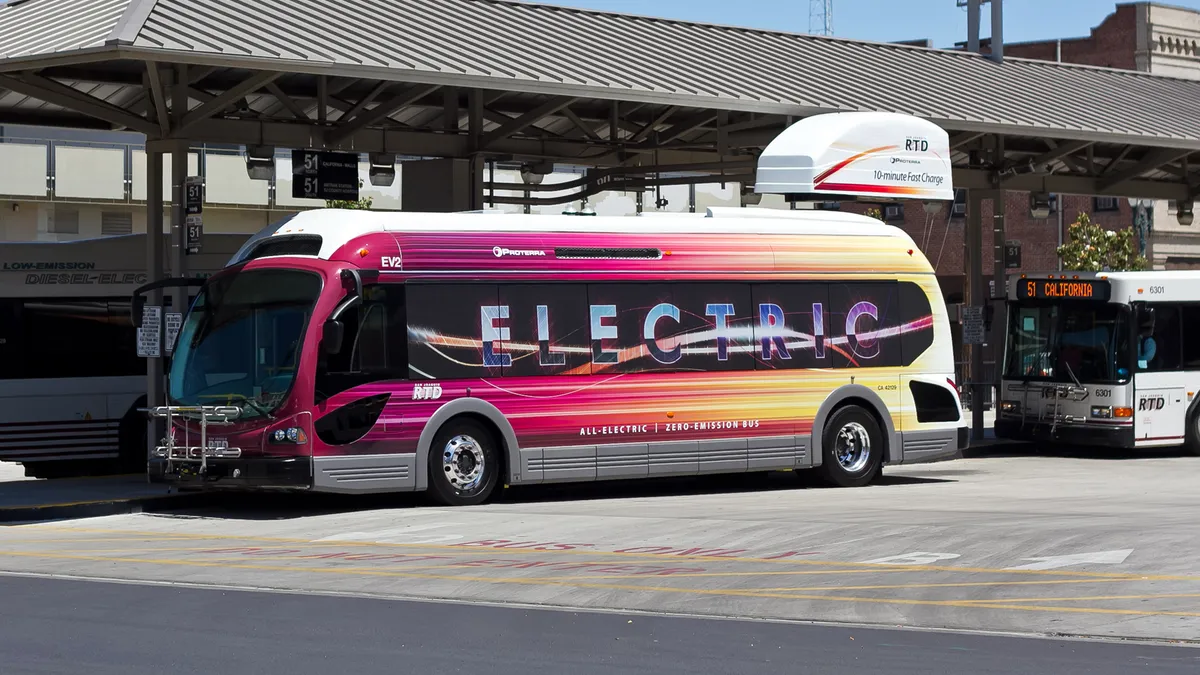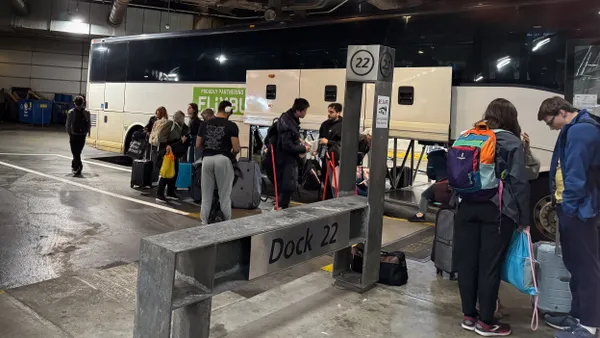Dive Brief:
- The San Joaquin Regional Transit District (RTD), which services Stockton, CA, says it has become the first in the nation to convert an entire bus rapid transit (BRT) route to electric buses, according to GovTech. Leaders say RTD worked hard to beat out other cities striving for electric-only routes, including Indianapolis.
- The battery-fueled buses are about three times more efficient than the hybrid buses they replace. They can travel 30-40 miles, or about two hours, on one charge. Charging takes about 10 minutes.
- Work is underway for a second all-electric route, which RTD expects to launch in January 2018. It aims to convert the entire BRT system to electric buses by 2025.
Dive Insight:
Cities regularly struggle with finding the transportation solution of right fit, but bus rapid transit — which is widely popular in South America — is catching on more in the U.S. It's different from a traditional bus system in that it uses dedicated bus lanes to keep traffic flowing more quickly and efficiently, and the bus stops generally are on raised, protected platforms with kisoks, similar to rail systems. BRT often gets pitted against other transportation options like light rail, but the San Joaquin Regional Transit District touts its BRT system as one that provides light rail-type service at a fraction of the price.
The conversion to electric vehicles further boosts the long-term financial benefits, RTD says. Each electric battery bus costs about $850,000 — funded through grants — and doesn't guzzle the dozens of gallons of fuel that hybrid buses consume weekly. The BRT line requires fewer large infrastructure investments than a light rail system because it doesn't operate on rails, although some charging infrastructure is necessary for the bus batteries.
Incorporating electric buses into Stockton's BRT system may lead to financial benefits, but the most widely publicized aspect of the plan is that it lowers carbon emissions. Transportation agencies across the country already use some electric buses, including Stockton itself, which added two of them in 2013. But converting a whole route to electric buses is unique and illustrates the city's commitment to meeting its goal of running an entirely electric, zero-emissions fleet by 2025. It also contributes to meeting goals that California Governor Jerry Brown laid out last year in his action plan to get 1.5 million zero-emission vehicles on the state's roadways by 2025.












